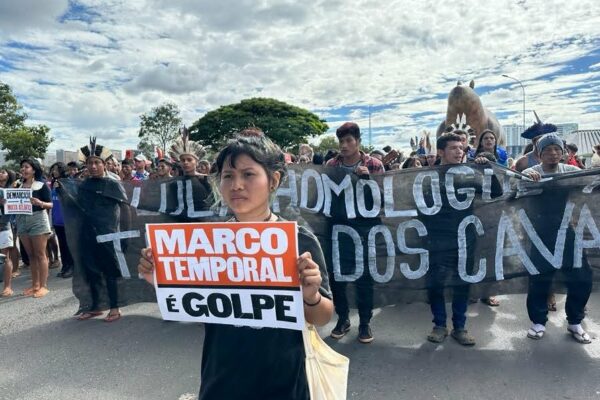The uncontacted tribes in the forest borderlands of Peru and Brazil, such as those pictured last week pointing a bow and arrow at a plane, are facing a threat from something beyond their wildest imagining. It comes from a thing of which they’ve never heard, being built to serve a people who they have no idea even exist. It is a road, and in time it could lead to their destruction.
The 711-mile Trans-Oceanic Highway, which will eventually link the Amazon river ports of Brazil with the Pacific ones of Peru, is the biggest threat to the indigenous peoples – uncontacted or otherwise – in that part of South America, says John Hemming, celebrated expert on Brazilian peoples and author of many books, among them the acclaimed Tree of Rivers. “The bad news,” he says, “is that the Chinese have persuaded Brazil and Peru to cut a road through this region, and it’s blazing ahead. In theory, it should not affect these peoples, and it won’t go slap through their land. But when it’s built, the settlers will come pouring in.” And, as he points out, one main road grows spurs and side roads, allowing those who do directly threaten the tribes – illegal loggers and mineral prospectors – far better access to the uncharted areas than they have now.
There are, said Mr Hemming, thought to be 34 uncontacted groups in Brazil, and around 20 in Peru. Most live in forest that already enjoys some protection. But the damage can begin even before direct encounters occur, with incomers making tribes flee traditional territory and move into conflict with other groups.
Yet it is when there is face-to-face contact that bad things can swiftly happen. Disease is by far the biggest hazard. “These people are formidably fit,” Mr Hemming said, “but they are fatally vulnerable to our everyday illnesses. Among them, such diseases as the common cold and measles are unknown and, if caught, deadly. After contact was made with the Surui people, for instance, half of their 400 members died from ‘Western’ illnesses within a few years.” Small wonder that Brazil’s indigenous people, thought to number five million when Europeans arrived, now stand at just 350,000. The uncontacted people are a small fraction of that total.
Mr Hemming, who has made contact with four “lost” tribes in his lengthy career as an Amazon specialist, said that the people spotted last week may have once been part of another group. “These tribes are often fragmenting,” he said. “A village can’t be bigger than about 1,000 people – there just aren’t the resources to support larger numbers. Or there may have been a dispute and a younger chief has taken six or so families off to start elsewhere, sometimes occupying a site abandoned long ago.”
But he said that threats are not the whole story. Brazil’s official policy is to leave people alone as long as possible. Contact is made only in an emergency, or if it is necessary to get the tribe’s territory mapped and preserved. There are enormous areas protected for them, and public opinion is on their side. Mr Hemming said that a poll asked if it was right that indigenous people, less than half of 1 per cent of Brazil’s 190m population, should occupy 11 per cent of the country’s land. More than two-thirds said it was.
It is just as well. That road is coming, and it will take more than bows and arrows to stop it.













